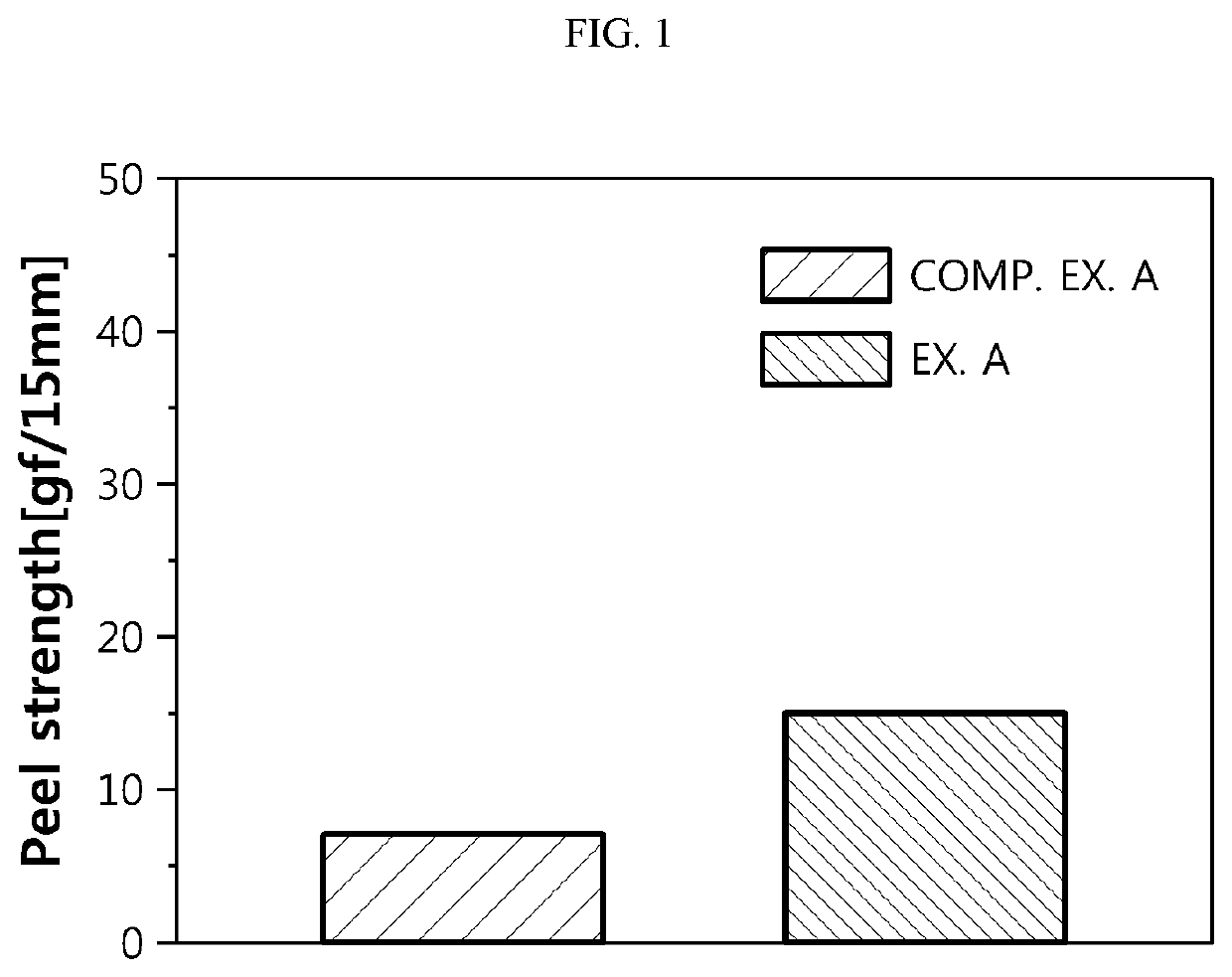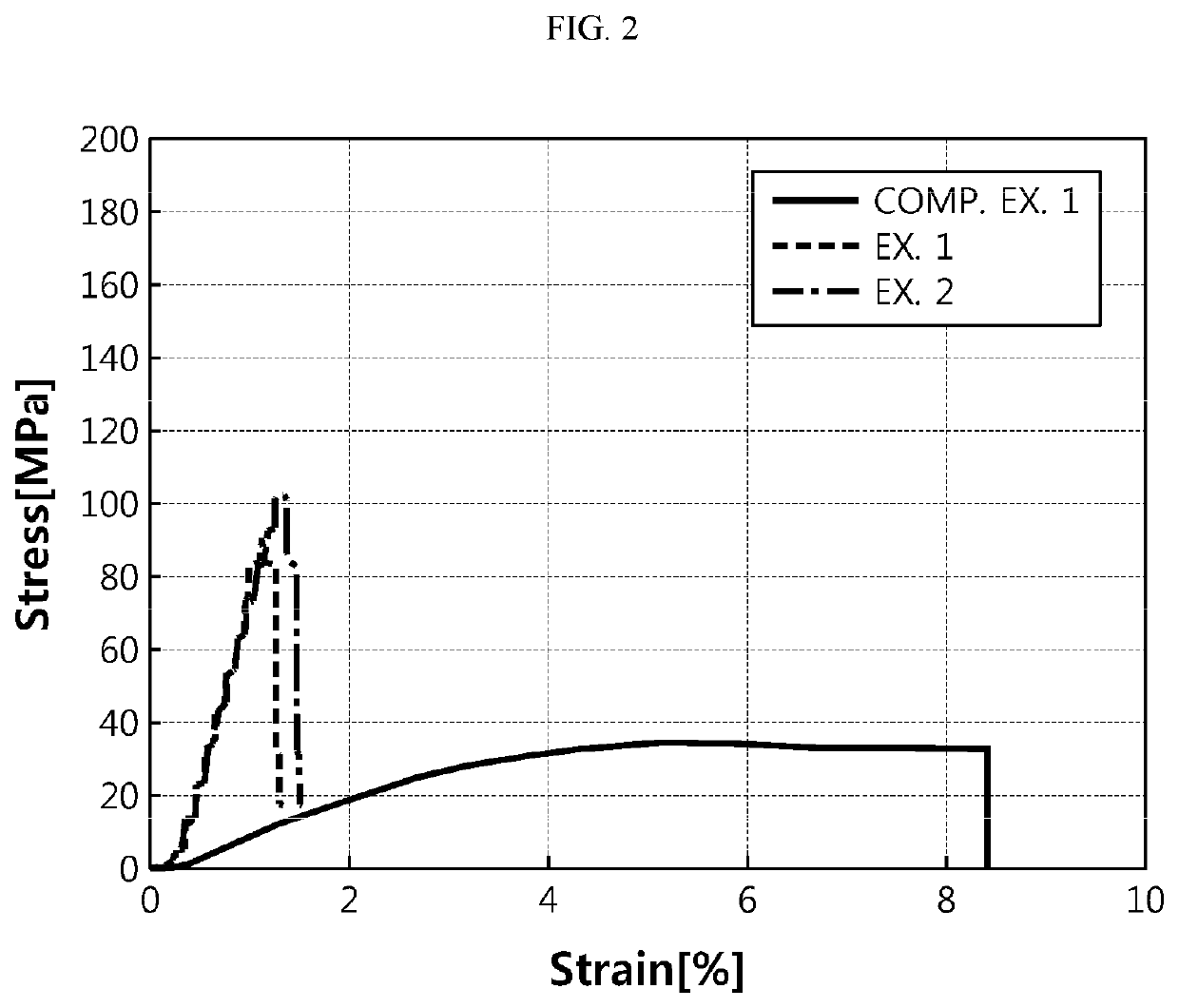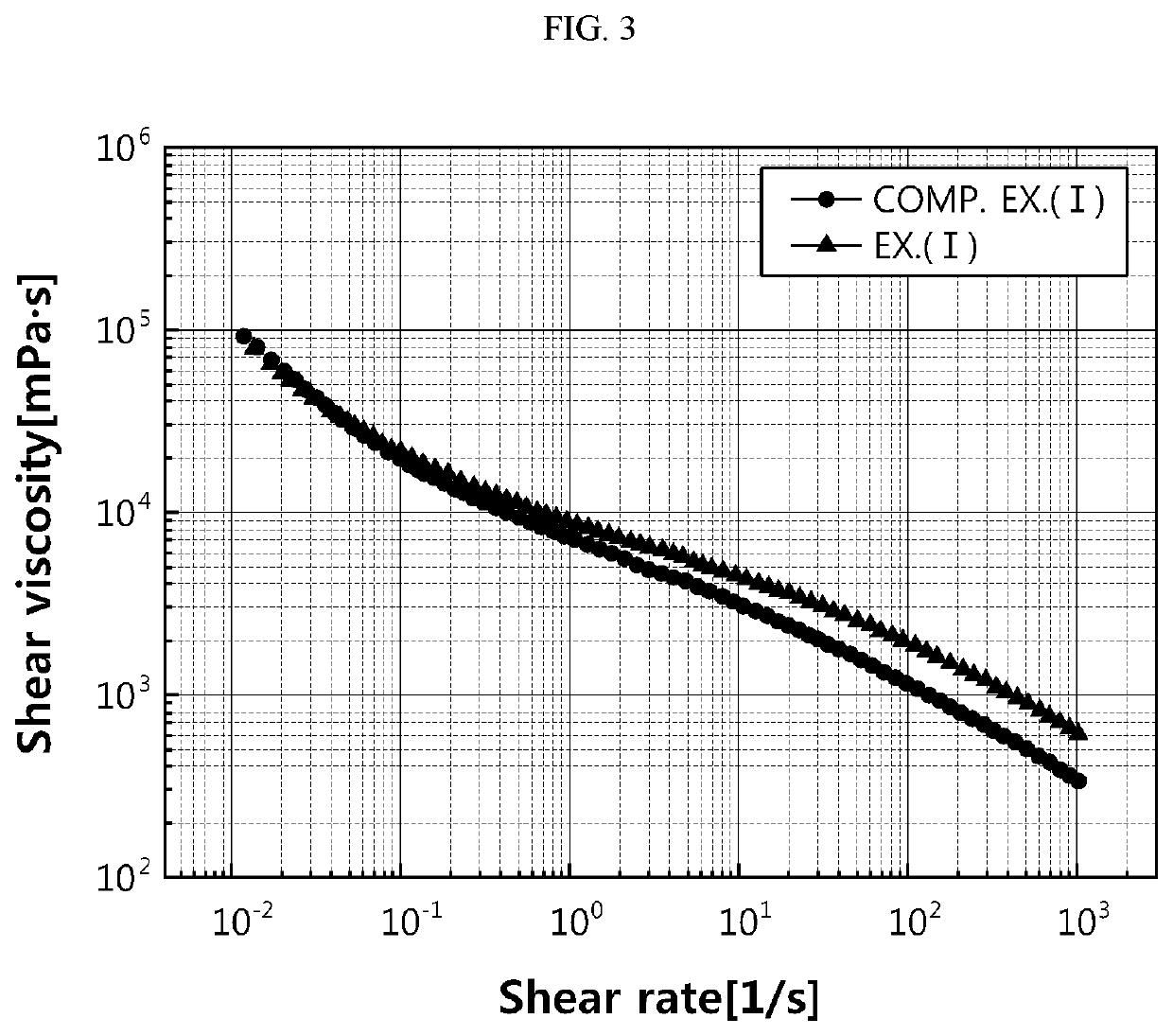Binder for negative electrode of lithium secondary battery and negative electrode for lithium secondary battery including the same
- Summary
- Abstract
- Description
- Claims
- Application Information
AI Technical Summary
Benefits of technology
Problems solved by technology
Method used
Image
Examples
preparation example 1
[0108]First, acrylamide, acrylic acid, methyl acrylate and acrylonitrile were prepared in an amount of 60 wt %, 10 wt %, 25 wt % and 5 wt %, respectively.
[0109]Acrylonitrile was mixed with bromoform at a volume ratio of 25:15, particularly 25 mL:15 mL, and the mixture was introduced to an ice bath and irradiated with light for 3 hours. The resultant polyacrylonitrile resin was washed with methanol and acetone, followed by drying.
[0110]The resultant polyacrylonitrile was introduced to a test tube together with acrylic acid, bromoform diluted with benzene was introduced thereto, and the test tube is covered with a lid and irradiated with light for 45-90 minutes. Next, the resultant resin was washed with benzene several times and freeze-dried to obtain about 3 g of polyacrylonitrile-co-polyacrylic acid (PAN-PAA).
[0111]Then, PAN-PAA and methyl acrylate were dissolved in benzene and the mixture was agitated, benzoyl peroxide was introduced thereto as an initiator, 1-butanethiol was intro...
example 1
re of Binder Film
[0115]First, 2 g of the binder obtained from Preparation Example 1 was dispersed in 14.6 g of water as a dispersion medium. Next, the dispersed composition was coated on a release substrate made of a Teflon box to a thickness of 180 μm and dried naturally to obtain a binder film. The resultant binder film was cut and vacuum dried at 100° C. for 24 hours to remove water.
example 2
re of Binder Film
[0116]First, 2 g of the binder obtained from Preparation Example 1 was dispersed in 14.6 g of water as a dispersion medium. Next, the dispersed composition was coated on a release substrate made of a Teflon box to a thickness of 180 μm and dried naturally to obtain a binder film. The resultant binder film was cut and vacuum dried at 130° C. for 24 hours to remove water.
PUM
 Login to View More
Login to View More Abstract
Description
Claims
Application Information
 Login to View More
Login to View More - R&D
- Intellectual Property
- Life Sciences
- Materials
- Tech Scout
- Unparalleled Data Quality
- Higher Quality Content
- 60% Fewer Hallucinations
Browse by: Latest US Patents, China's latest patents, Technical Efficacy Thesaurus, Application Domain, Technology Topic, Popular Technical Reports.
© 2025 PatSnap. All rights reserved.Legal|Privacy policy|Modern Slavery Act Transparency Statement|Sitemap|About US| Contact US: help@patsnap.com



